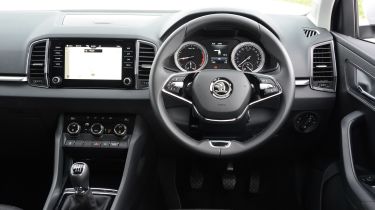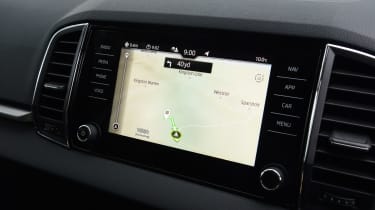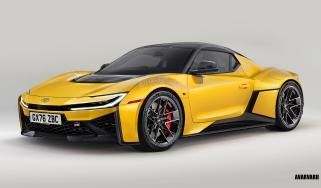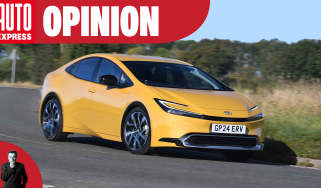Skoda Karoq - Interior, design and technology
Conservative but appealing design wraps a suitably advanced technical package that’s practical, too

Some may see the design of the Skoda Karoq as being less characterful than its Yeti predecessor, but while it lacks the flashes of stylistic flair of the Toyota C-HR, the Karoq does have a solid, almost premium appeal.
At a glance, the Karoq shares a strong resemblance with the bigger seven-seat Skoda Kodiaq (and, indeed, the smaller Skoda Kamiq), with a very similar grille and headlamp design, a ridge up the centre of the bonnet, and chunky wheel arches.
The biggest differences are the rear lights and the extra length, width, and height of the Kodiaq if you park them side-by-side. Both are only available in a five-door body style, but the Karoq only offers seating for five. It can be specified with the same VarioFlex adjustable rear bench as the Kodiaq, which allows you to alter the amount of passenger legroom or boot space depending on your needs.
Inside, the Karoq cabin design is conservative, with few flashy or fashion-led design highlights. The 2022 facelift brought some metallic finishes that raised the tone of the cabin, but it remains incredibly functional with great ergonomics, plenty of space and a great sense of quality.
Sat-nav, stereo and infotainment
Built-in sat-nav isn’t as big a deal in this class as it used to be, especially since all Karoq models get wireless Apple CarPlay and Android Auto smartphone connectivity, which allows you to run a navigation app from your phone on the standard 8.0-inch Amundsen infotainment system. Wireless phone charging is also provided as standard for this reason.
The top-of-the-range Sportline version comes with a slightly larger 8.25-inch screen, although we prefer the smaller set-up used on SE Drive and SE L because it retains physical dials for volume and seek functions. The optional 9.2-inch Columbus system available from SE L and above adds gesture control, allowing you to control a limited number of functions with hand gestures in a similar fashion to the infotainment systems in some BMWs.
All versions provide a bright screen with sharp graphics and a simple-to-navigate menu layout, and they are more responsive than the infotainment system found in the Nissan Qashqai. Like the Qashqai, the Karoq comes with a fully digital driver’s instrument cluster, but the 10.25-inch display in the Karoq is much more configurable and easier to control using the buttons on its steering wheel.











